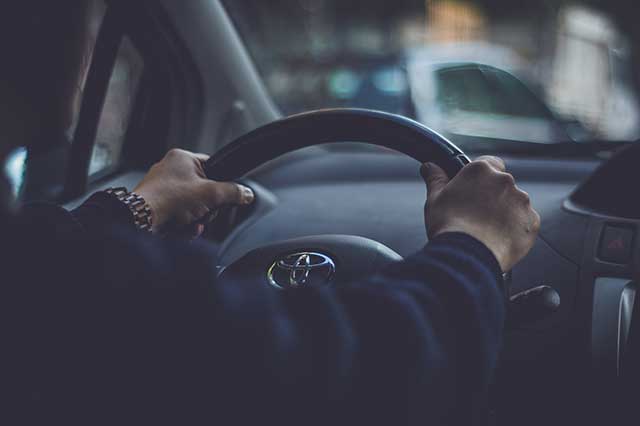Drowsy Driving Prevention Week is November 4 – 11. Affirmed by Congress and other governmental and NGOs, it is sponsored by the American Sleep Foundation (ASF). This public awareness campaign reminds drivers about sleep safety, with emphasis on the perils encountered by those who insist on driving while sleep-deprived. It’s good timing, considering that the holidays are just ahead and many of us will be on the highways for some portion of them.
According to the ASF, as many as half of all U.S. adult drivers admit to consistently getting behind the wheel while drowsy. And 20% admit to falling asleep behind the wheel at some point over the past year. Another two out of five admit to falling asleep behind the wheel at least once since they began driving.
Further study of this dangerous phenomenon uncovers other chilling facts:
- Driver reaction times, hazard awareness, and ability to sustain their focus all worsen the more drowsy a driver becomes.
- You are three times more likely to be in (or cause) a car crash if you drive fatigued.
The National Highway Traffic Safety Administration (NHTSA) estimates that over 1,500 die and over 70,000 are injured from the more than 100,000 drowsy driving accidents each year. NHTSA also tells us that younger drivers (age 16-24) are nearly twice as likely to be involved in a drowsy driving wreck as drivers twice their age (40-59).
Many Drowsy Drivers Think they can “Fight Through It”
Drowsy driving doesn’t seem like a challenge when compared to impaired (alcohol or drugs) driving. But those who drive more than 20 consecutive hours without sleep have the same awareness-equivalent as one who drives with a blood alcohol concentration (BAC) of 0.08%. That’s the legal intoxication limit. “But I wouldn’t drive that long without rest,” you say. What if you do that for 15 hours? Using the math, you could be as impaired as someone with a BAC of 0.04 or .06. Would you drive around with your kids in the car at .06? Would you trust yourself not to hit someone else because your reaction times are just short of legally intoxicated? If you try to fight through it, you and someone else can become casualties of your arrogance. If you experience any of the following indicators, you’re driving drowsy. When you feel them, PULL OVER! Signs of drowsy driving:
- You have difficulty focusing, frequently blink your eyes, and your eyelids seem “heavy.”
- It’s hard to stop daydreaming.
- It gets hard to keep your head up.
- You catch yourself drifting from your lane, swerving, tailgating, or take those “slow down” bumps too fast.
- You begin losing some short-term memory.
- You’re missing exits or struggle to read traffic signs.
- You can’t stop yawning.
- You feel restless, irritable, or aggressive.
Get There Safely and Keep Others Safe
The greatest cure for drowsy driving is sleep. It’s hard these days to get a good night’s sleep. But if you can do it (more than just six hours), you’ll start out alert for the drive. Other hints include:
- Don’t be in too much of a hurry. It’s better to allow the time to drive alert and arrive alive.
- Use the buddy system if the opportunity arises. Having someone to spell you a few hours can be invaluable. Conversation fights the “drowsies” and heightens driver awareness.
- If driving alone, take a break every 100 miles or 2 hours. Do something to refresh yourself: grab a snack; refill that coffee mug; walk around briskly for at least 10 minutes. Wake your sedentary body up.
- Take a nap if you think you need one. Find a safe place to pull over for a 20- to 30-minute “power nap.” And when you wake up, take a brief stroll – just a couple of minutes to clear the cobwebs and get the blood flowing again.
- Avoid alcohol and medications that cause drowsiness.
- Avoid driving at times when you would normally be asleep.
- Caffeine can be your best friend. The equivalent of two cups of coffee can increase alertness for several hours. Just don’t lean too heavily on the coffee without taking some of the other steps listed above to avoid drowsy driving.
We can drive a long way and still be in Texas. Drive safely – and be alert – no matter how far you go. And if you are injured by a drowsy driver, the legal team of The Accident and Injury Law Office of Terry Bryant is at your service 24/7/365.
Attorney Terry Bryant
 Terry Bryant is Board Certified in personal injury trial law, which means his extensive knowledge of the law has been recognized by the Texas Board of Legal Specialization, setting him apart from many other injury attorneys. The 22 years he spent as a Municipal Judge, Spring Valley Village, TX also provides him keen insight into the Texas court system. That experience also helps shape his perspective on personal injury cases and how they might resolve. This unique insight benefits his clients. [ Attorney Bio ]
Terry Bryant is Board Certified in personal injury trial law, which means his extensive knowledge of the law has been recognized by the Texas Board of Legal Specialization, setting him apart from many other injury attorneys. The 22 years he spent as a Municipal Judge, Spring Valley Village, TX also provides him keen insight into the Texas court system. That experience also helps shape his perspective on personal injury cases and how they might resolve. This unique insight benefits his clients. [ Attorney Bio ]


 Terry Bryant is Board Certified in personal injury trial law, which means his extensive knowledge of the law has been recognized by the Texas Board of Legal Specialization, setting him apart from many other injury attorneys. The 22 years he spent as a Municipal Judge, Spring Valley Village, TX also provides him keen insight into the Texas court system. That experience also helps shape his perspective on personal injury cases and how they might resolve. This unique insight benefits his clients. [
Terry Bryant is Board Certified in personal injury trial law, which means his extensive knowledge of the law has been recognized by the Texas Board of Legal Specialization, setting him apart from many other injury attorneys. The 22 years he spent as a Municipal Judge, Spring Valley Village, TX also provides him keen insight into the Texas court system. That experience also helps shape his perspective on personal injury cases and how they might resolve. This unique insight benefits his clients. [ 

